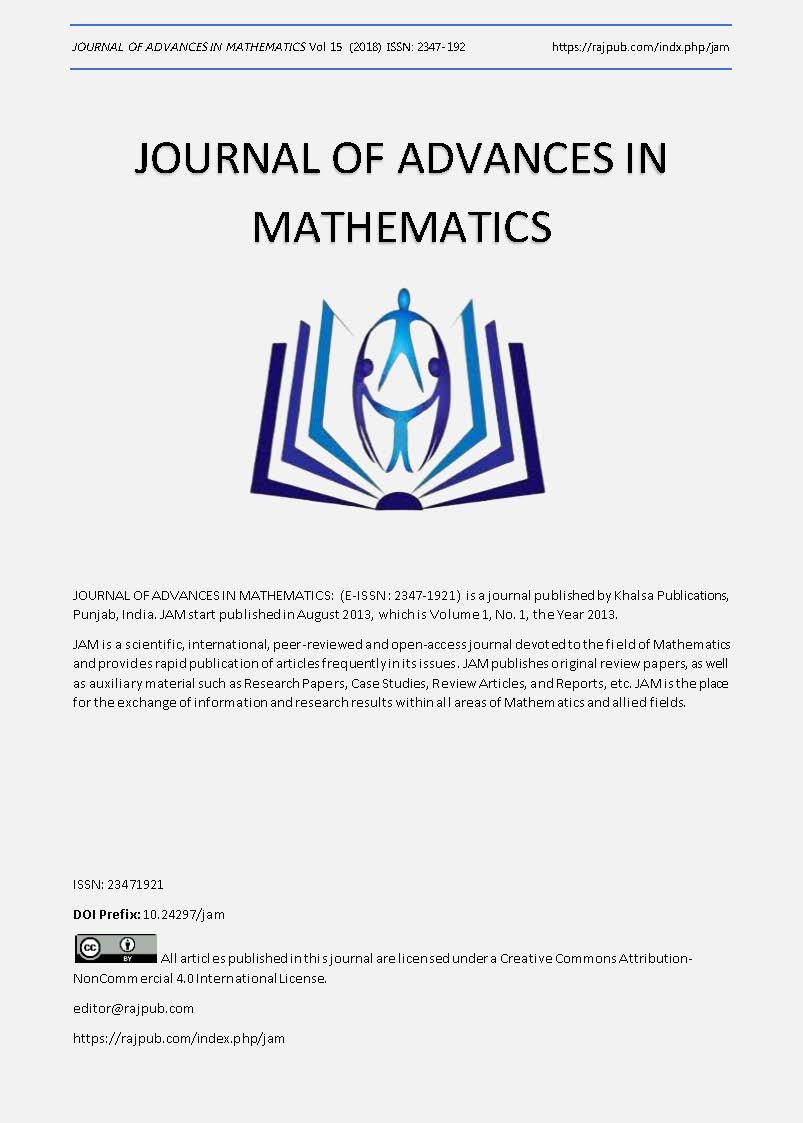Probabilistic Inventory Model Multi-Source Backlogged Probabilistic Inventory Model for Crisp and Fuzzy Environment
DOI:
https://doi.org/10.24297/jam.v15i0.7364Keywords:
Constrained model, Continuous distributions, Lagrange multiplier technique, Periodic inventory model, Varying costsAbstract
This paper proposed a multi-item multi-source probabilistic periodic review inventory model under a varying holding cost constraint with zero lead time when: (1) the stock level decreases at a uniform rate over the cycle. (2) some costs are varying. (3) the demand is a random variable that follows some continuous distributions as (two-parameter exponential, Kumerswamy, Gamma, Beta, Rayleigh, Erlang distributions).
The objective function under a constraint is imposed here in crisp and fuzzy environment. The objective is to find the optimal maximum inventory level for a given review time that minimize the expected annual total cost. Furthermore, a comparison between given distributions is made to find the optimal distribution that achieves the model under considerations. Finally, a numerical example is applied.
Downloads
References
Abuo - El-Ata M., Fergany H. and El-Wakeel M., Probabilistic Multi-Item Inventory Model with Varying Order Cost under Two Restrictions: A Geometric Programming Approach, International Journal of Production Economics, 83 (2003) PP. 223–231.
Chiang C., A periodic review replenishment model with a re?ned delivery scenario, International Journal of Production Economics, 118 (2009) PP. 253-259
Chiang C., Optimal ordering policies for periodic-review systems with a re?ned intra-cycle time scale, Production, Manufacturing and Logistics, European Journal of Operational Research 177 (2007) PP. 872–881.
Chiang C., Optimal replenishment for a periodic review inventory system with two supply modes, European Journal of Operational Research 149 (2003) PP. 229–244
Chiang C., Periodic Review Inventory Models with Stochastic Supplier's Visit Intervals, International Journal of Production Economics, 115 (2008) PP. 433-438.
Chu K., Lung Y., Shing K. and Thomas N., Note on inventory model with a mixture of back orders and lost sales Peter, European Journal of Operational Research 159 (2004) PP. 470–475.
Fabrycky W. J. and Banks Jerry. (1967). Procurement and Inventory Systems: THEORY AND ANALYSIS. Newwork, Amsterdam, London.
Fergany H., Probabilistic Multi Item Inventory Model with Varying Mixture Shortage Cost Under Restrictions, Springer Plus Journal of Springer Plus 5(1), (2016), PP. 1-13.
Fergany H., El-Hefnawy N. and Hollah O., Probabilistic Periodic Review Inventory Model Using Lagrange Technique And Fuzzy Adaptive Particle Swarm Optimization, Journal of Mathematics and Statistics 10 (3) (2014) PP. 368-383.
Fergany H. and El-Wakeel M., Probabilistic Single – Item Inventory Problem with Varying Order Cost Under Two Linear Constraints. Journal of the Egyptian Mathematical Society, 12(1), (2004) PP. 71-81.
Konstantaras I. and Papachristos S., Production, Manufacturing and Logistics Optimal policy and holding cost stability regions in a periodic review inventory system with manufacturing and remanufacturing options, European Journal of Operational Research 178 (2007) PP. 433–448.
Rong M., Mahapatra N. and Maiti M., A multi-objective wholesaler–retailers inventory-distribution model with controllable lead-time based on probabilistic fuzzy set and triangular fuzzy number, Applied Mathematical Modelling 32 (2008) PP. 2670–2685.
Sadjadi S., Ghazanfari M. and Youse?i A., Fuzzy Pricing and Marketing Planning Model: A Possibilistic Geometric Programming Approach, Expert System Applied 37 (2010) PP. 3392–3397.
Silver A. and Robb J., Some insights regarding the optimal reorder period in periodic review inventory systems, International Journal of Production Economics 112 (2008) PP. 354–366
Yuyue S. and Hoong C., A periodic-review inventory model with application to the continuous-review obsolescence problem, European Journal of Operational Research 159 (2004) PP.110–120.
Downloads
Published
How to Cite
Issue
Section
License
 All articles published in Journal of Advances in Linguistics are licensed under a Creative Commons Attribution 4.0 International License.
All articles published in Journal of Advances in Linguistics are licensed under a Creative Commons Attribution 4.0 International License.








